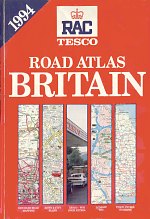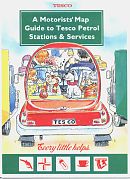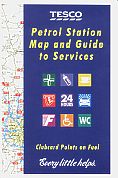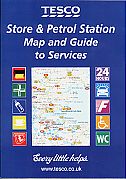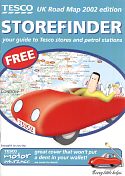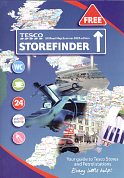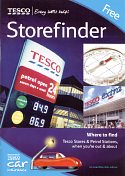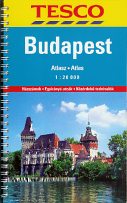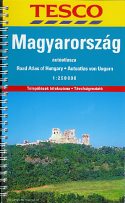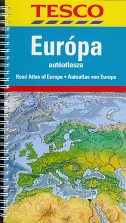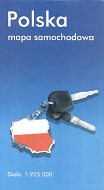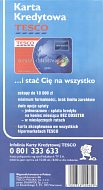Superstore service station road maps - Tesco
Brief History
Tesco started in the 1930s as a discount chain in Greater London and by 1970 was seen as being the most downmarket of the major chains. In the last 40 years it has transformed itself with a move to large modern stores, most of which have attached petrol stations, and it ranks now as the largest UK petrol retailer by volume, with over 15% of national sales, although only sixth by station numbers.
|
In recent years, Tesco has experimented with smaller store formats, including starting a chain of standalone petrol stations under the "Tesco Express" branding. These have largely been superseded by Tesco Express C-stores at over 100 Esso sites, and numerous community Tesco Express stores without fuel. Maps, Atlases & Map BookletsTesco's first maps were based on the RAC large format road atlas of Britain (right). The rear cover had a planning map showing Tesco petrol stations, and a list of sites inside, but otherwise it was the standard atlas with Geographers' A-Z maps and RAC town plans. Northern Ireland was excluded - at the time Tesco had not entered that market. (Shown at 2/3 relative scale) |
|
|
|
|
|
|
|
The first two sheet maps (above left) are from 1995 and 1997; both were produced by Cook, Hammond & Kell. |
|
|
|
Tesco also operates stores in Eastern Europe and Asia, including China and Korea. Some of its Polish and Hungarian stores have added own-brand petrol stations, although in Thailand it has instead entered into a joint venture with Esso to develop Tesco Express stores at selected Esso sites, in a manner very similar to the UK. No maps are lnown from any of the Asian operations or from the Irish service stations.
Tesco: Hungary
Tesco has rapidly become the largest supermarket chain by sales in Hungary. It started building filling stations at most of its Hungarian locations around 2000, and although it now has only 43 outlets it is already the sixth largest brand of petrol in the country.
|
|
|
|
As such it has started selling own brand spiral-bound atlases in its service station shops, each with around 144 pages of maps and index. There are three titles: Budapest, Hungary and Europe. All are prepared for Tesco by Cartographia; the ones shown here date from 2006 (Budapest) and 2007. |
Tesco: Poland
|
|
|
This Tesco map of Poland was published in 2004, based on the listing of stores inside (it is undated). Produced by Daunpol at 1:925,000 the cartography is more sophisticated than on British Tesco maps, although the 38 Tesco hypermarkets are not marked on the map itself, but listed in a side panel. At the time it was issued only 5 or so of the locations sold petrol, although that number has since increased as Tesco petrol stations have been added to some existing stores. Note how the Tesco branding appears only on the rear cover (and on four internal panels). |
Text and layout © Ian Byrne, 2000-12
All original copyrights in logos and map extracts and images are acknowledged and images are included on this site for identification purposes only.

